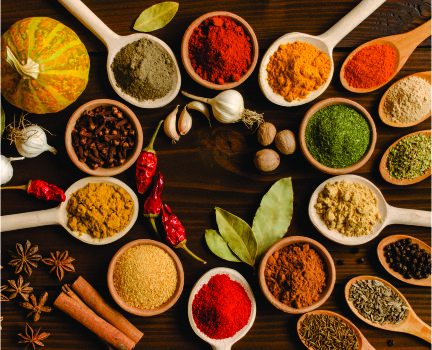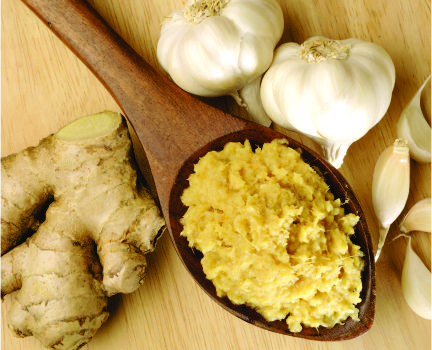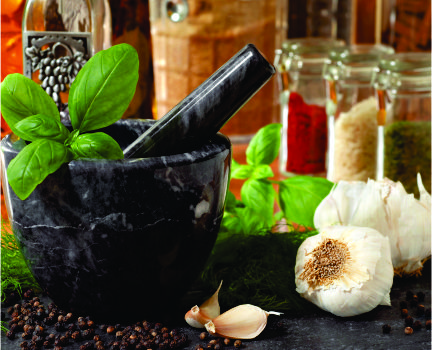Spices are synonymous with Indian cuisine. You don’t need to be in the kitchen to know something’s cooking. The strong aroma of Indian spices hits you wherever you are. That’s the secret of using even a pinch of these not-so exotic spices in your cooking.
Spices are aromatic flavorings got from the stems, barks, roots, fruits, flowers, buds and seeds of different plants and trees.
They are used in different forms; some whole, some powdered. Some like the ever-famous garam masala are blends of different spices.
Let’s look at some basic spices that are essential to add that distinctive flavor to your daily cuisine.

Spices of every kind
Cumin seeds (Jeera)
Cumin seeds are used both whole and in the ground form. Whole seeds are usually added to oil or butter at the start, a process called tadka, similar to tempering, to release essential oils and flavors.
Ground Coriander (Dhanya)
Coriander seeds, from the Cilantro plant are dried and ground into a powder and used along with cumin in many vegetarian dishes.
Black pepper (Kali mirch)
Although green and white pepper, with mild flavors, are also available, black pepper is mainly used in Indian cuisine and has the strongest flavor. Go slow with this spice, or be prepared to face the heat!
Cinnamon (Dalchini)
This aromatic bark has a woody flavor and can be used not only in curries and other vegetarian dishes but also in sweets and savories. Try pairing it with fruits like apples; apple pie, apple crumble?
Cardamom (Elaichi)
Available in both the green and black variety, this spice with a sweetish flavor is also used in several desserts and sweets. In sweets, you can remove the outer pod and just coarse grind and add the seeds.
Cloves (Laung)
These dried flower buds are used both in biryanis, curries, stews as well as in sweet dishes. If used whole, you can pick them out once the dish is ready.
Fenugreek seeds (Methi) & dried leaves (Kassori methi)
Although methi seeds have a slight bitter taste, the dried leaves are aromatic and are usually added right at the end of the preparation to give it that typical ‘curry’ aroma.
Mustard (Rai)
Black mustard seeds are the pungent variety. They are added right at the beginning to hot oil . They splutter and pop and set free a sharp, yet amazing aroma.
Chili powder
One of the most popular spices, chilli powder, is made from dried red chillies. Pay special attention to this spice as they come in different varieties; from mild to dynamite, depending on where the chilies are grown.
Turmeric (Haldi)
This spice, most often used as a powder, adds colour and an earthy flavor to all vegetarian dishes.
Asafoetida (Hing)
A pinch of this aromatic spice is usually added right at the start to hot oil, butter or ghee and allowed to sizzle to give it that distinct musky aroma.
Bay leaf (Tej patta)
The whole aromatic leaf is usually added to oil along with a few other ingredients (cumin, cloves, mustard) at the start of the preparation and removed just before serving.
Ginger & Garlic (fresh)
No vegetarian meal is complete without fresh ginger and fresh garlic. Although you could opt for dried ginger, there’s nothing to compare with the flavour of freshly cut or grated ginger.

Fresh ginger and garlic add that special flavor
All these spices can be procured from the local supermarket or any Asian store, and when you do, make sure you store them away in air tight containers in a cool, dark environment. Heat from the cooking range, light, humidity, etc., should not get to them as this could alter their color, flavor and shelf life. Although powders are more convenient to use, remember the aromas are preserved far better in the whole! If you are unable to get powders, buy the whole spices and grind them at home.
You may not see the ‘typical’ metal thali when you visit South India. But the same wholesome meal is presented to you in a different way; on a traditional banana leaf, flavoured with the distinct touch of coconut milk and coconut oil!
The number of dishes in a thali is also never constant. It increases on special days; weddings, festivals, religious ceremonies!

A mortar and pestle is always handy
Spices are fun to experiment with. Try out different combinations. While no calories are added from this cabinet, make sure you use them in moderation, or you might have to suffer the spicy consequences!
